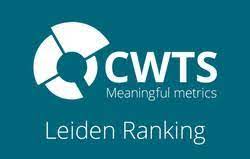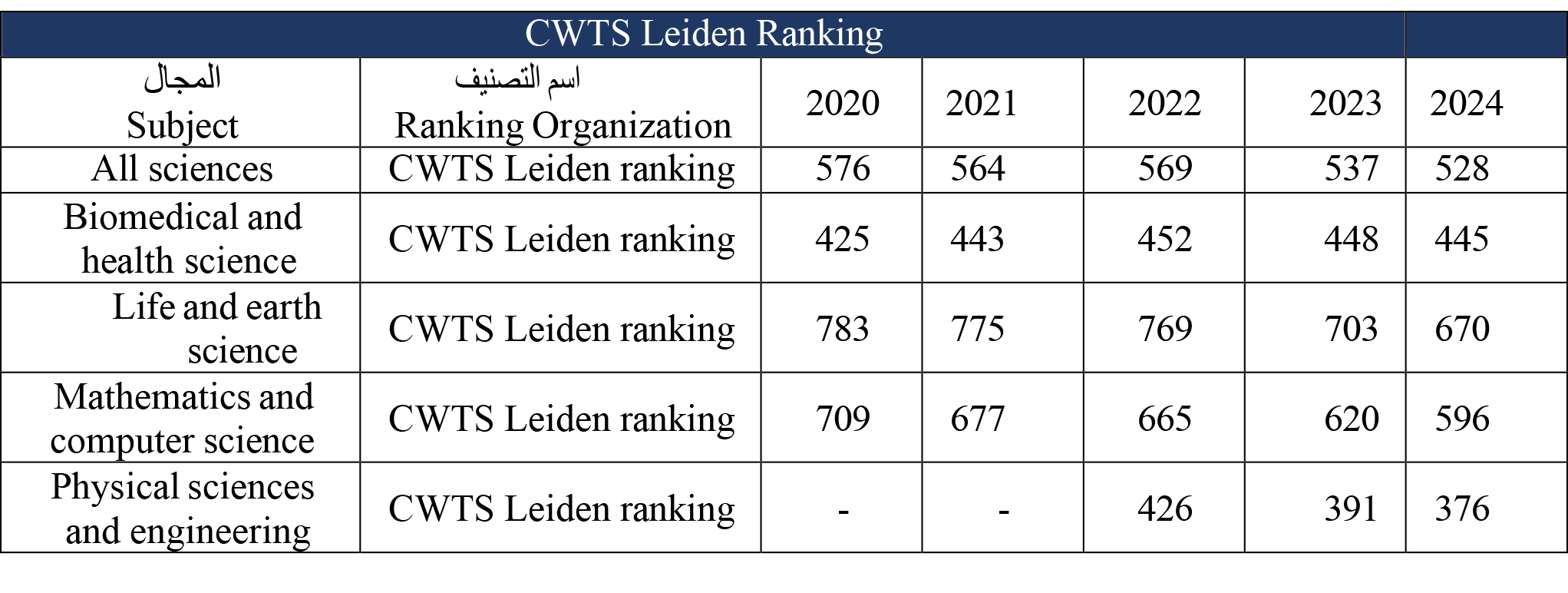تصنيف ليدن الهولندي
2025-07-02
تصنيف ليدن (CWTS) 2020 يقدم رؤى هامة حول الأداء العلمي لأكثر من 1000 جامعة رائدة على مستوى العالم. اختر المؤشرات التي تفضلها، ثم أنشئ النتائج واستكشف أداء الجامعات.
بالمقارنة مع التصنيفات الجامعية الأخرى، يوفر تصنيف ليدن مؤشرات بيبليومترية أكثر تقدماً. والمنهجية الأساسية لهذا التصنيف موثقة بشكل قوي، يقدم تصنيف ليدن معلومات حصرياً عن البحث العلمي الذي يتم في الجامعات. يُمثل البحث في المنشورات، والبيانات التي تم جمعها بعناية حول هذه المنشورات تشكل الأساس لتصنيف ليدن. كما يضمن هذا الأساس استقلالية تصنيف ليدن، حيث لا يعتمد على البيانات التي تقدمها الجامعات نفسها. وأخيراً، بما أن الجامعات هي مؤسسات معقدة تتمتع بتنوع في الأشكال والسياقات والمهام، لا يمكن تمثيل أدائها بواسطة رقم واحد فقط. يقدم تصنيف ليدن مجموعة متنوعة من المؤشرات لتتمكن من استكشاف أداء الجامعات من زوايا مختلفة.
يعتمد تصنيف ليدن على المؤشرات التالية للتأثير العلمي:
(P): إجمالي عدد المنشورات لجامعة.
Top 1%)P) وPP (Top 1%): عدد ونسبة المنشورات في جامعة ما التي، بالمقارنة مع المنشورات الأخرى في نفس المجال وفي نفس السنة، تنتمي إلى أعلى 1% من المنشورات الأكثر استشهادًا.
Top 5%)P) وPP (Top 5%): عدد ونسبة المنشورات في جامعة ما التي، بالمقارنة مع المنشورات الأخرى في نفس المجال وفي نفس السنة، تنتمي إلى أعلى 5% من المنشورات الأكثر استشهادًا.
Top 10%)P) وPP (Top 10%): عدد ونسبة المنشورات في جامعة ما التي، بالمقارنة مع المنشورات الأخرى في نفس المجال وفي نفس السنة، تنتمي إلى أعلى 10% من المنشورات الأكثر استشهادًا.
Top 50%)P) وPP (Top 50%): عدد ونسبة المنشورات في جامعة ما التي، بالمقارنة مع المنشورات الأخرى في نفس المجال وفي نفس السنة، تنتمي إلى أعلى 50% من المنشورات الأكثر استشهادًا.
TCS و MCS: إجمالي ومتوسط عدد الاستشهادات لمنشورات جامعة ما.
TNCS و MNCS: إجمالي ومتوسط عدد الاستشهادات لمنشورات جامعة ما، معايير حسب المجال وسنة النشر. على سبيل المثال، قيمة MNCS تساوي 2 تعني أن منشورات الجامعة قد تم استشهادها بمعدل مرتين أعلى من متوسط مجالها وسنة النشر.
يتم احتساب الاستشهادات حتى نهاية عام 2021 في حساب المؤشرات المذكورة أعلاه، مع استبعاد الاستشهادات الذاتية من المؤلفين. جميع المؤشرات، باستثناء TCS وMCS، يتم تطبيعها لتباين أنماط الاستشهاد بين المجالات العلمية. ولغرض هذا التطبيع، يتم تمييز حوالي 4000 مجال علمي. يتم تعريف هذه المجالات على مستوى المنشورات الفردية، حيث يتم تعيين كل منشور في قاعدة بيانات Web of Science إلى مجال معين بناءً على علاقاته الاستشهادية مع المنشورات الأخرى.
تصنيف جامعة عين شمس

لمزيد من المعلومات حول التصنيف


.svg)

